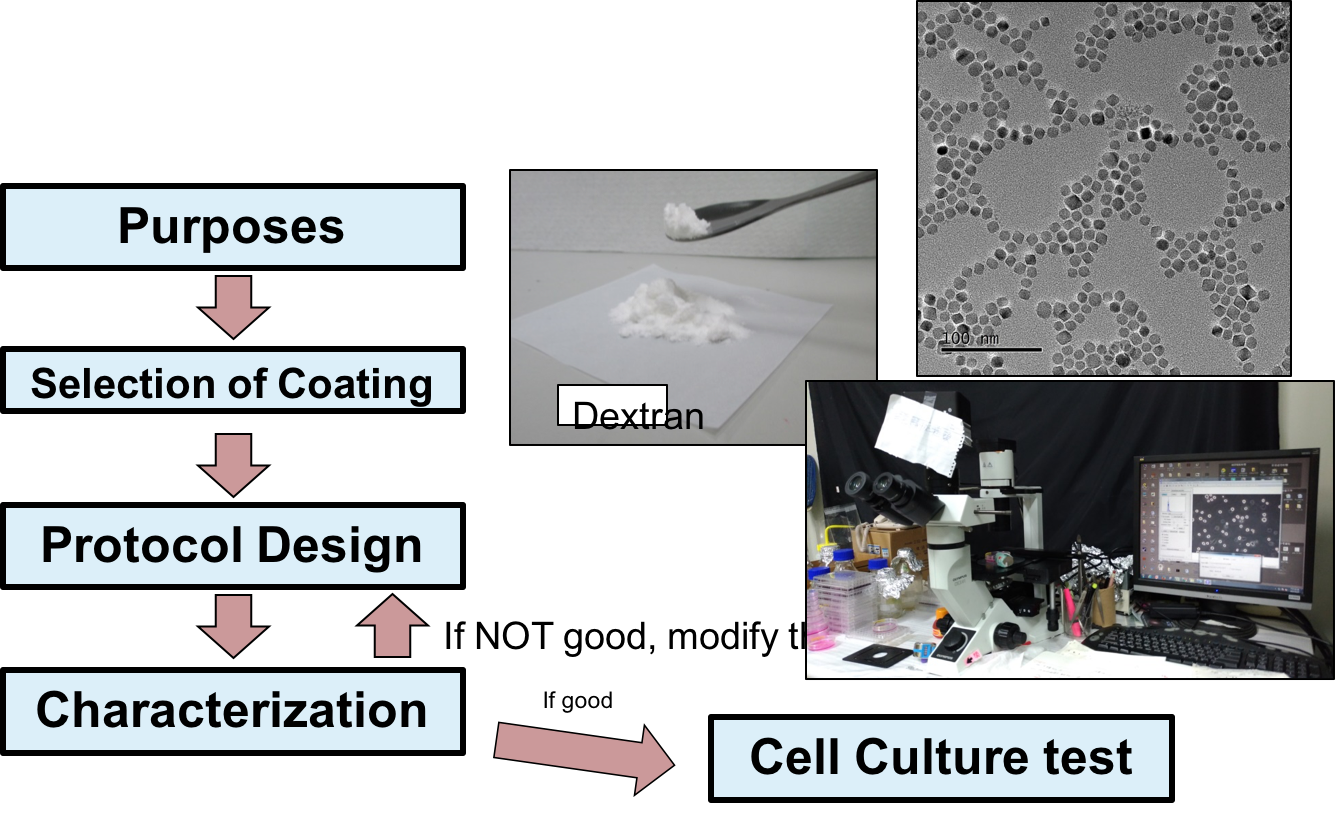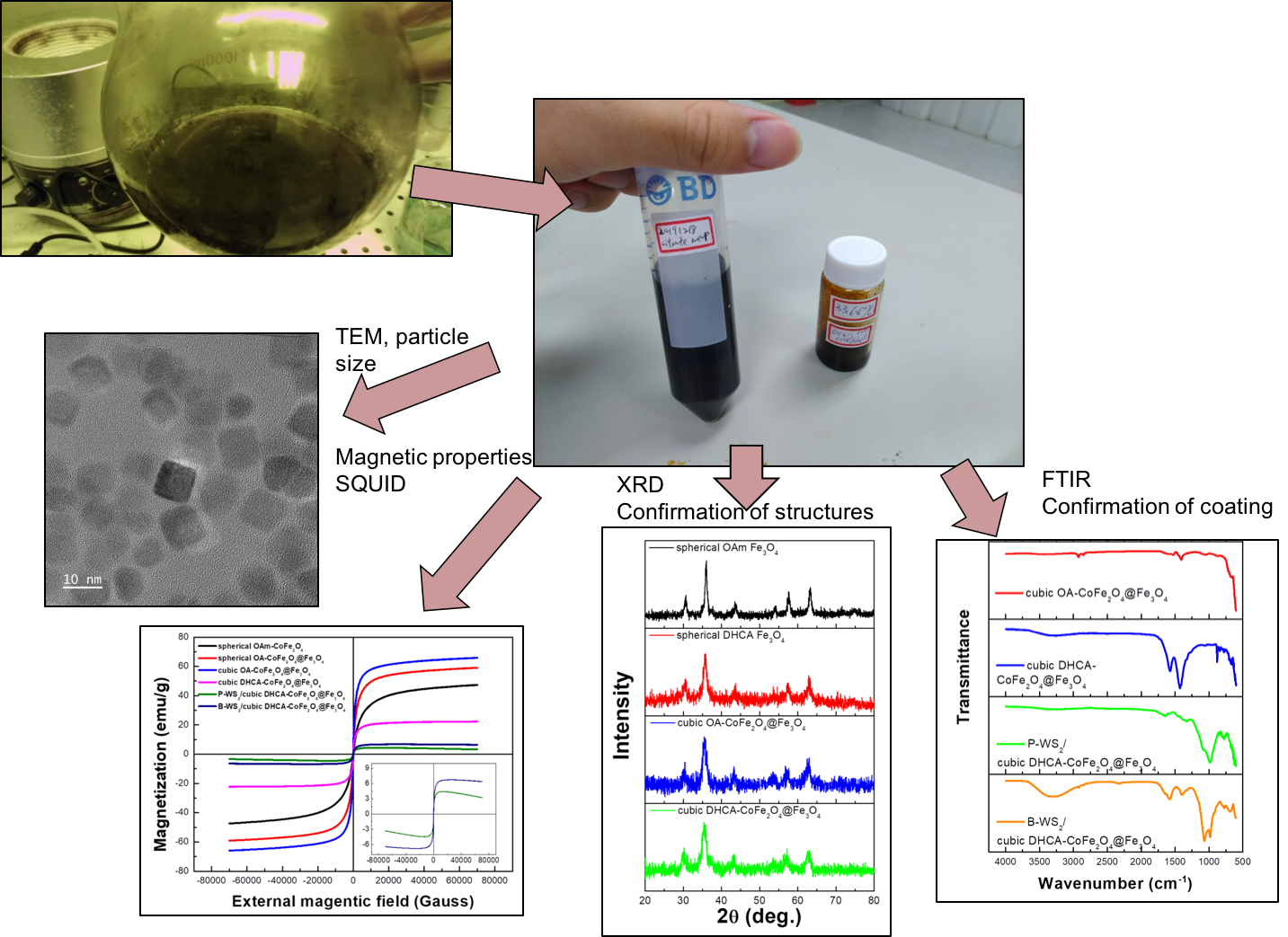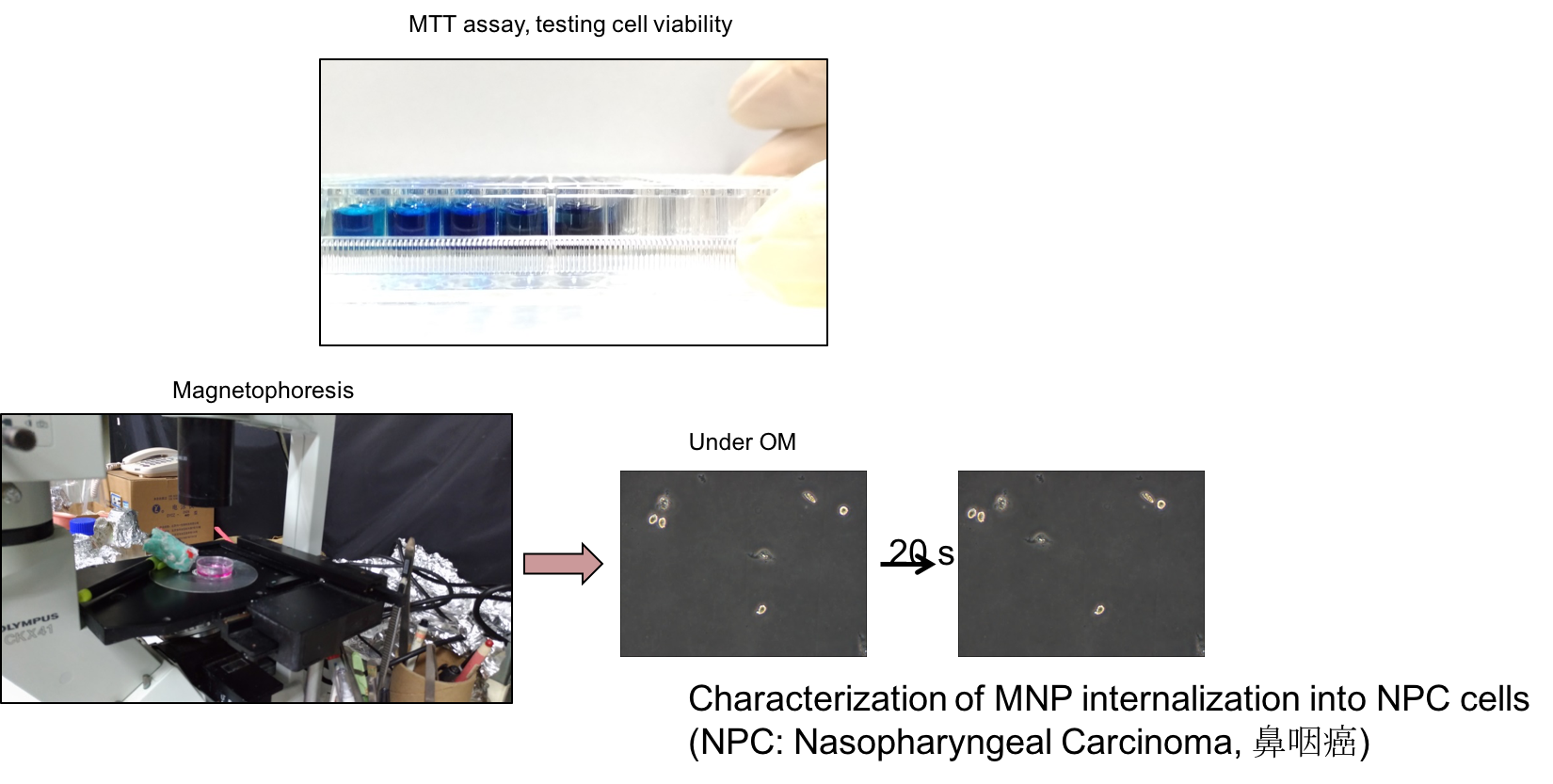
The superparamagnetic iron oxide nanoparticles (SPION) have been widely studied in biomedical field as the diagnostic techniques for MRI, the agents for hyperthermia treatments, and magnetically manipulated drug carriers. The SPION in the nanoscale possess the superparamagnetic properties instead of ferrimagnetic properties in the bulk scales. The SPION exhibit the negligible remanence and coercivity in the presence of the alternating external magnetic field. The reticuloendothelial system (RES) eliminates the particles above 50 nm in diameter from the circulatory system so that the SPION particle size should be controlled lower than 50 nm as possible. Thus, the SPION are generally modified with the various chemical functional groups to increase the repulsive potential and maintain the suspension stability between the SPION. However, the iron oxide particles without the appropriate modification also induce the immune response as a rule. To improve the non-natural stealthiness, the coating for the SPION should possess high biocompatibility, low cytotoxicity, long half-life, and biodegradability in the plasma.



